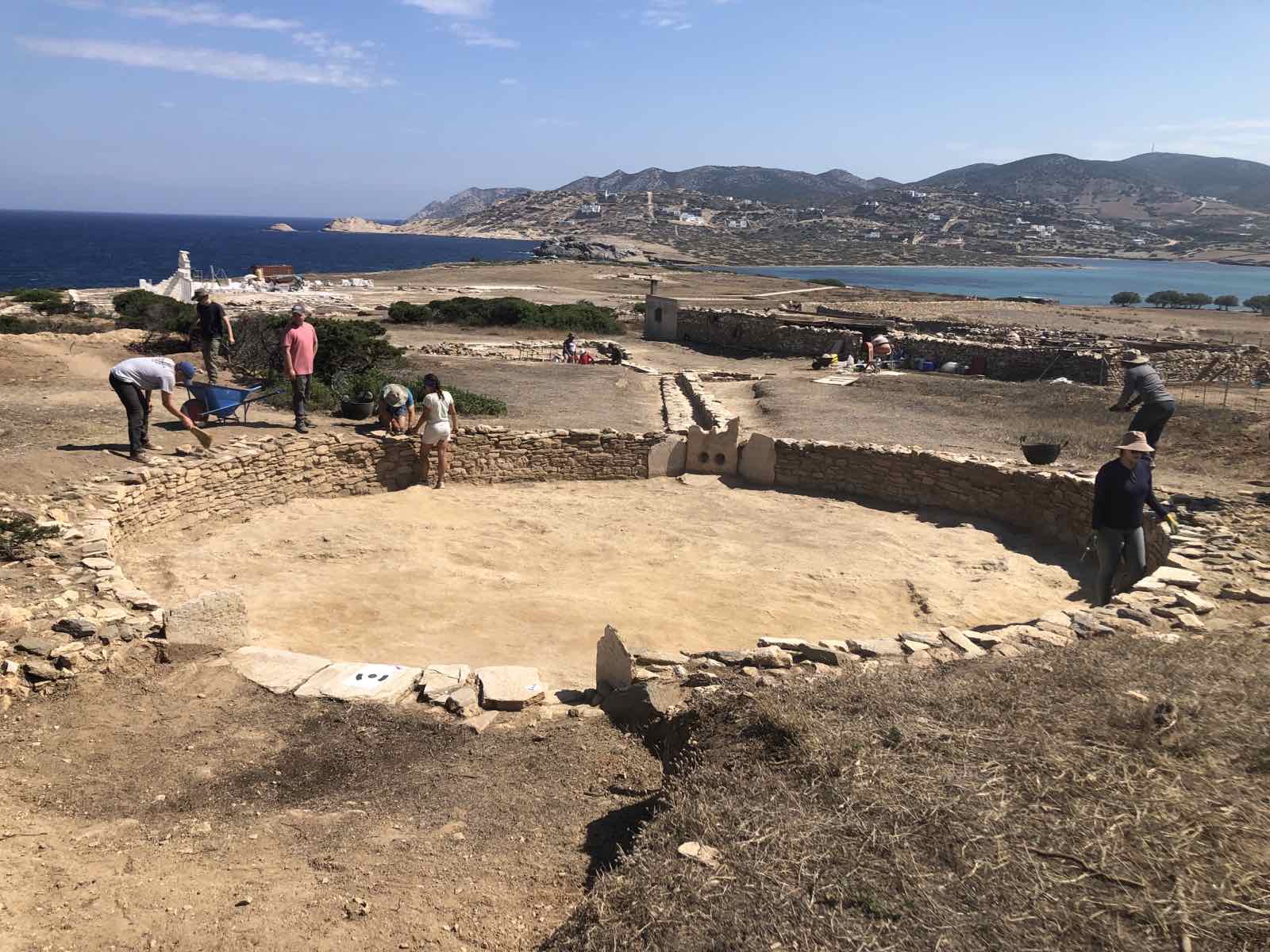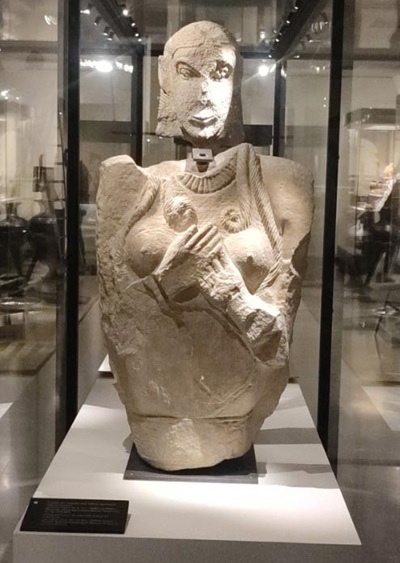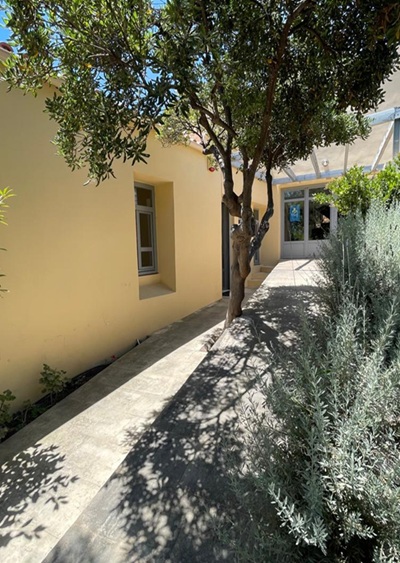
This year’s excavation on the island of Despotiko revealed important archaeological findings. Among other things, a headless male torso of the strict rhythm came to light, which stylistically refers to the “Kritios Boy” and can be dated immediately after 480 BC, a work of excellent quality made of Parian marble with smooth and glossy skin. Parts of archaic kuri were also found embedded as building material.
The systematic excavation at Mantra, on the islet of Despotiko, carried out since 2001 by the Ephorate of Antiquities of Cyclades under the direction of Yannos Kouragios, continued this year for seven weeks from 22 May to 14 July 2023, enriching the existing data on the topography of the site and its history from the Early Iron Age to Late Antiquity.

Tank 3 (View from ΝΔ)
Among other things, the excavations of 2023 added another building to the topography of the site. The building is rectangular in plan and consists of four rooms, two in a N-S alignment. A nearly intact banded crater was found in fragments inside the south-eastern room of the building (Room 2), while a large coarse crater was found submerged in the floor in the centre of the north-western room (Room 4). Of architectural interest are the south and west walls of the building, which are double, reaching a thickness of almost 1.20 m. In addition, two small four-sided structures formed by vertically placed stone slabs in two of the rooms were investigated. The structure in Room 2 has been placed at the entrance which appears to have been removed in a second phase of use. Drinking vessels, mainly scythes and bowls, were collected from the interior of the structure. Among the findings from the building were Attic black-tipped tapestry cups. The building was sheltered as indicated by the large quantity of clay antlers from the interior of the western rooms, but also fragments of clay gorgonian-shaped acorns and tapestry sherds.
The most important findings of this year’s excavation period came from the continuation of the investigation of the large archaic structure that was discovered in 2019 not far from the port. It is defined by two walls (T1 and T3). The structure was probably of fortification character; possibly a propylon with an enclosure. Strong collapse occupies its southernmost and eastern part. During the investigation of this collapse, a headless male torso of the austere style came to light, which stylistically refers to the Child of Cretius and can be dated immediately after 480 BC.

The Archaic kuros at the Archaeological Museum of Paros
The concentration of a large number of sculptures and bases in this area may suggest that this was their original location. It is reasonable to assume that the sculptures and columns would have been placed in a prominent position near the propylon, through which the entrance to the sanctuary and the temple of the god would have been made. These glorious dedications to the god Apollo, after the sanctuary ceased to function, would have formed a useful and durable building material for later buildings. Besides, this kind of ‘recycling’ is also attested in other buildings of the sanctuary, in which dozens of fragments of statues have been found embedded in second use.
The restoration work, lasting four weeks, was carried out this year by skilled marble craftsmen such as V.Hadjis. Μ. Armaos, Y. Skaris, Y. Palamaris, L. Ioannou, Y. Kontonikolaou under the supervision of the architect Goulielmos Orestides.
Επιπλέον, πραγματοποιήθηκαν εργασίες συντήρησης από τους συντηρητές Γ. Καράμπαλη και Ε. Τσαβού στις δεξαμενές και στον αγωγό που τις συνδέει, στον κεντρικό βωμό του ιερού, στα Κτίρια Ζ και Υ, αλλά και σε άλλα δωμάτια κτιρίων της θέσης.
The excavation and restoration works were carried out with the support of: Αthanasios and Marina Martinos Foundation, Paul and Alexandra Canellopoulos Foundation, The A.G.Leventis Foundation, C.Y.A, John S. Latsis Public Benefit Foundation, Μarion Stassinopoulos, “Friends of Paros&Antiparos Foundation and many other individuals/ friends of the effort.
The members of the scientific team participated in the excavation: Ilia Daifa (University of Thessaly), Alexandra Alexandridou (Associate Professor-University of Ioannina), Dr. Erica Angliker (ΒSA), Dr. Caspar Meyer (Bard Graduate Center), Dr. Christina Konstantakopoulos (ΕΙΕ, Birkbeck College), Luigi Lafasciano, the geologist Dr. Erich Draganits (University of Vienna), alumni and graduate students of the University of Ioannina (Luiza Panopoulou, Mata Samiotis, Anastasia Mallikopoulou, Lena Aslanidou and the graduate student of the Aristotle University of Thessaloniki, Ignatius Assatov, as also students from International Universities (CYA, Birkbeck College, Βard Graduate Center N.Y., Instituto de Estudos Avancados da Unicamp Brazil).







Leave A Comment